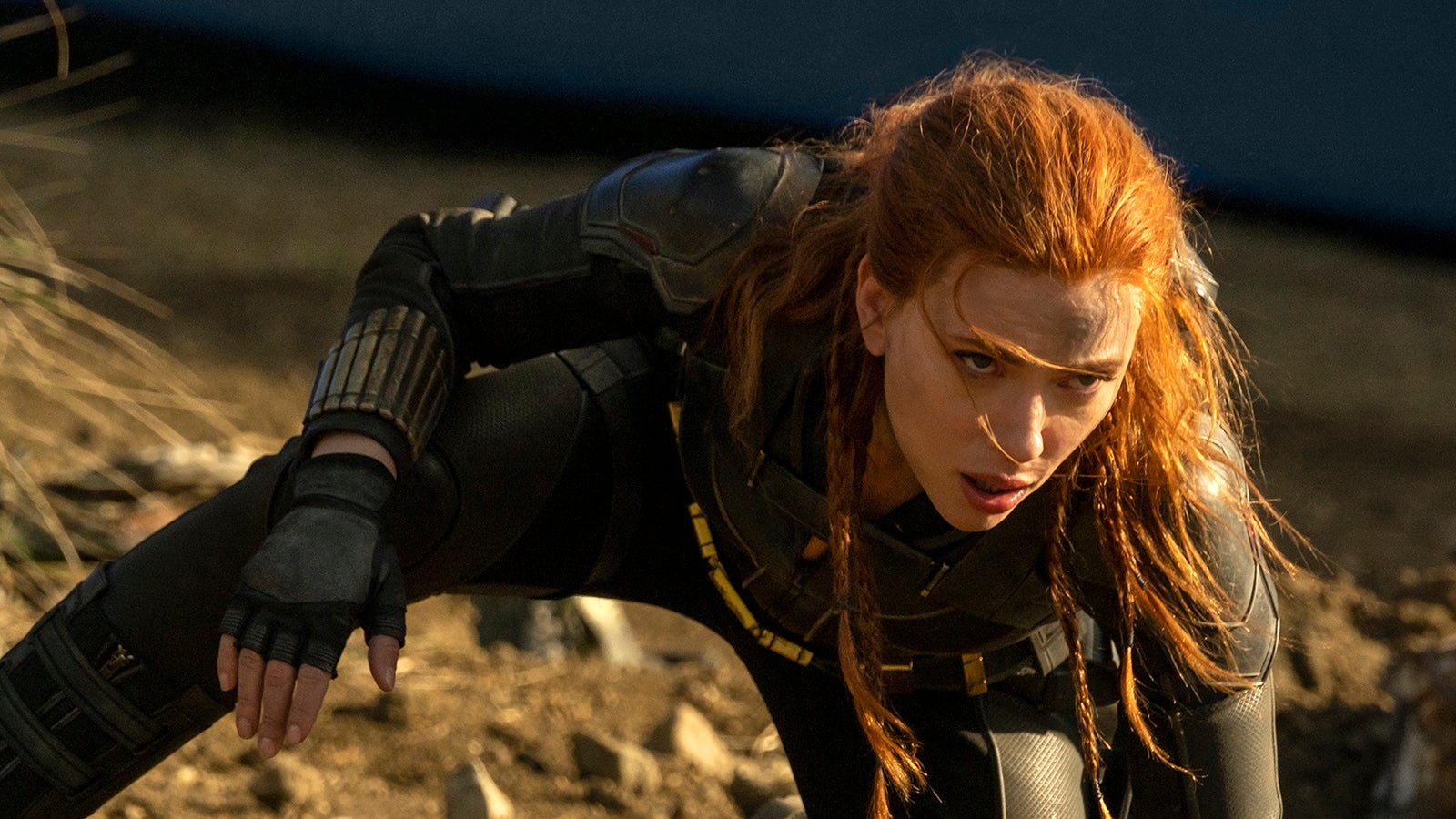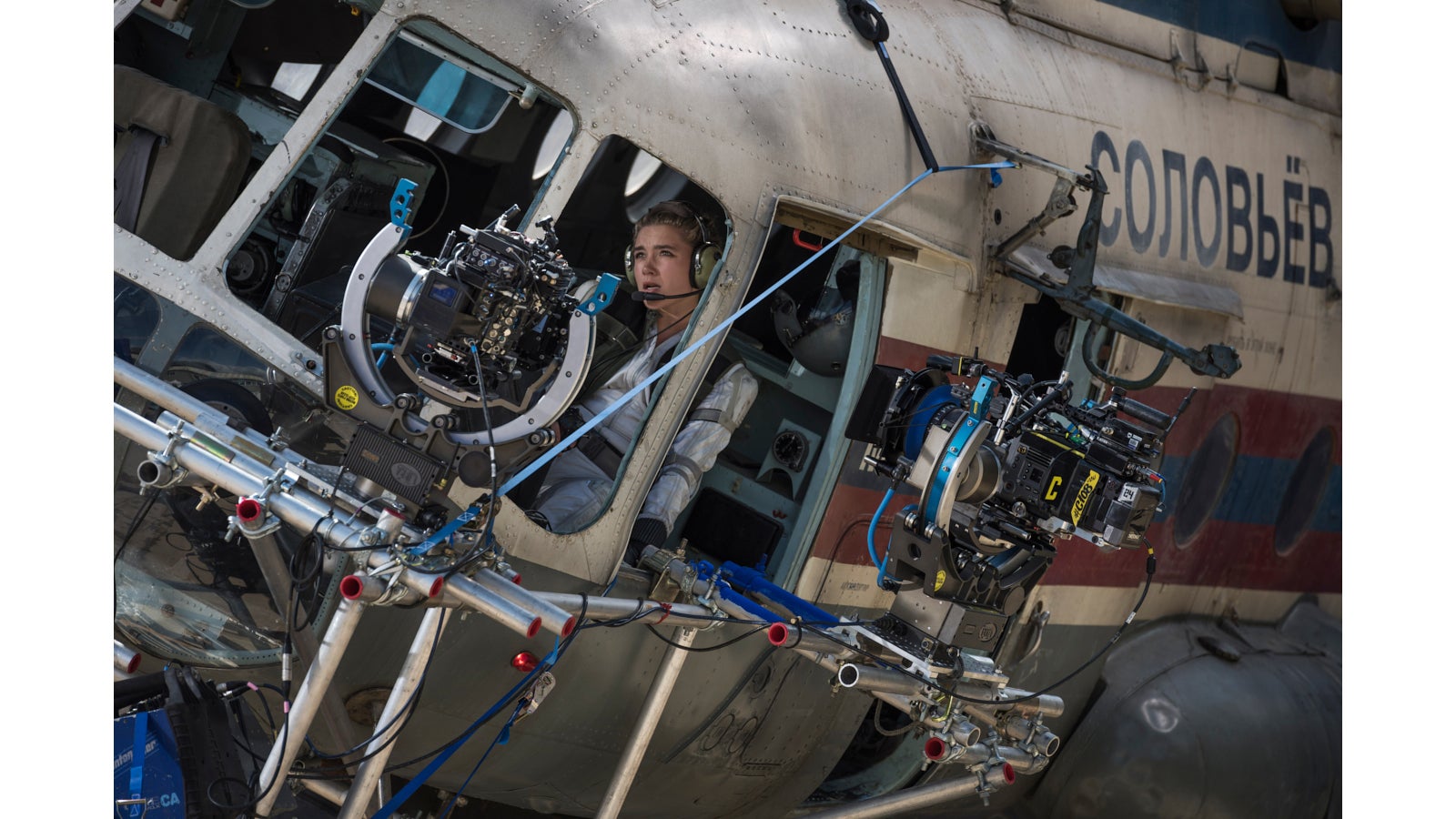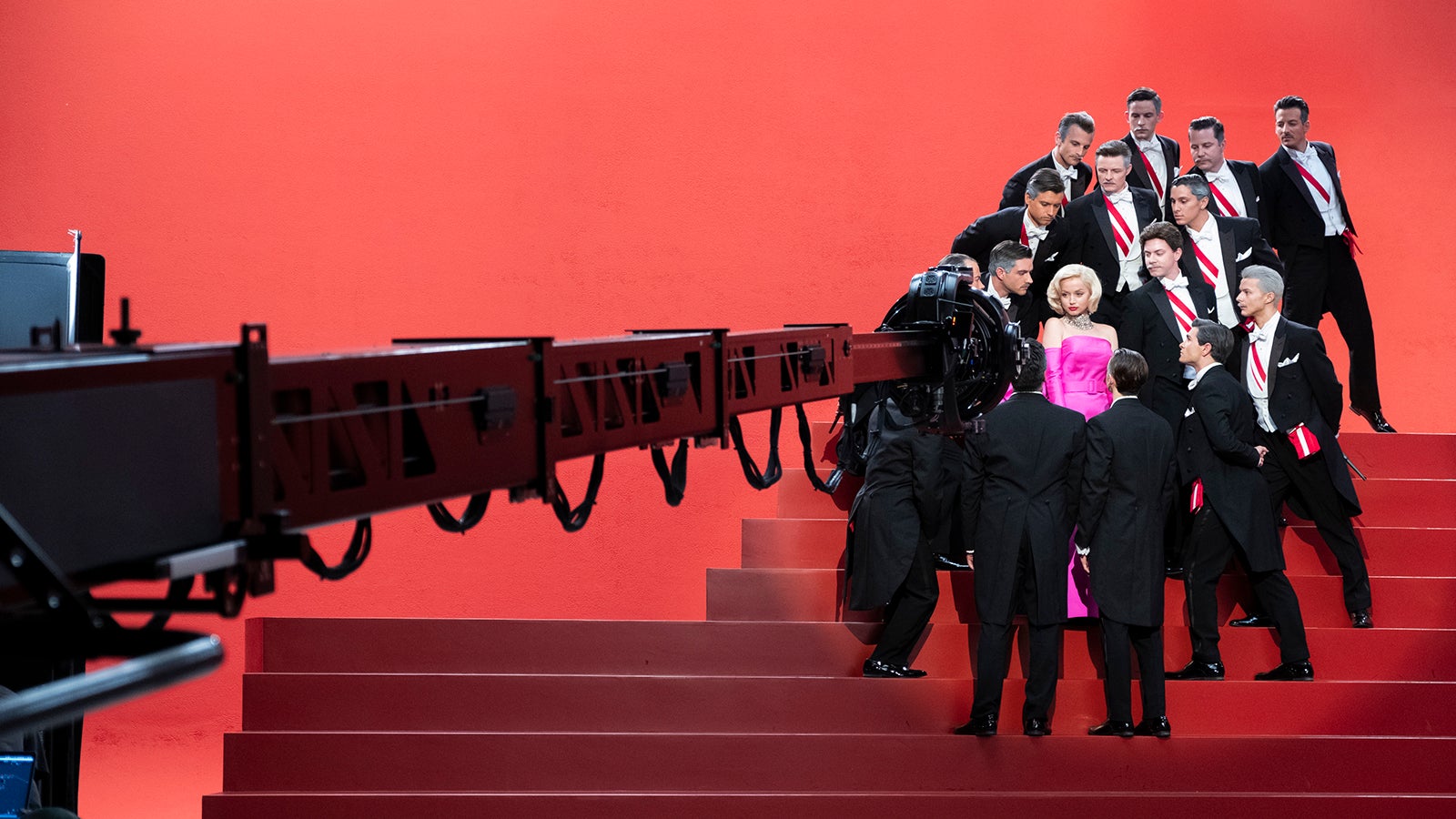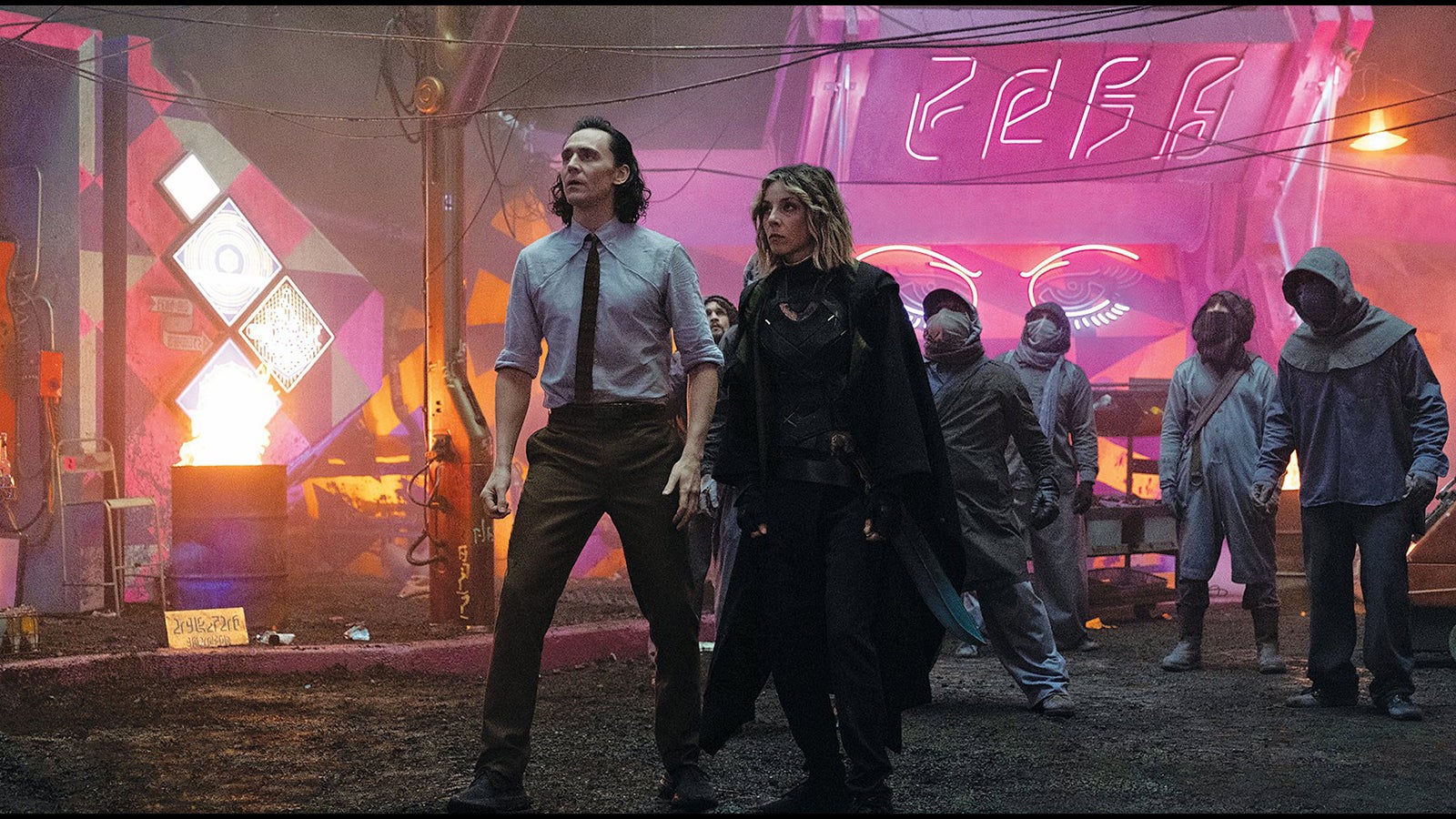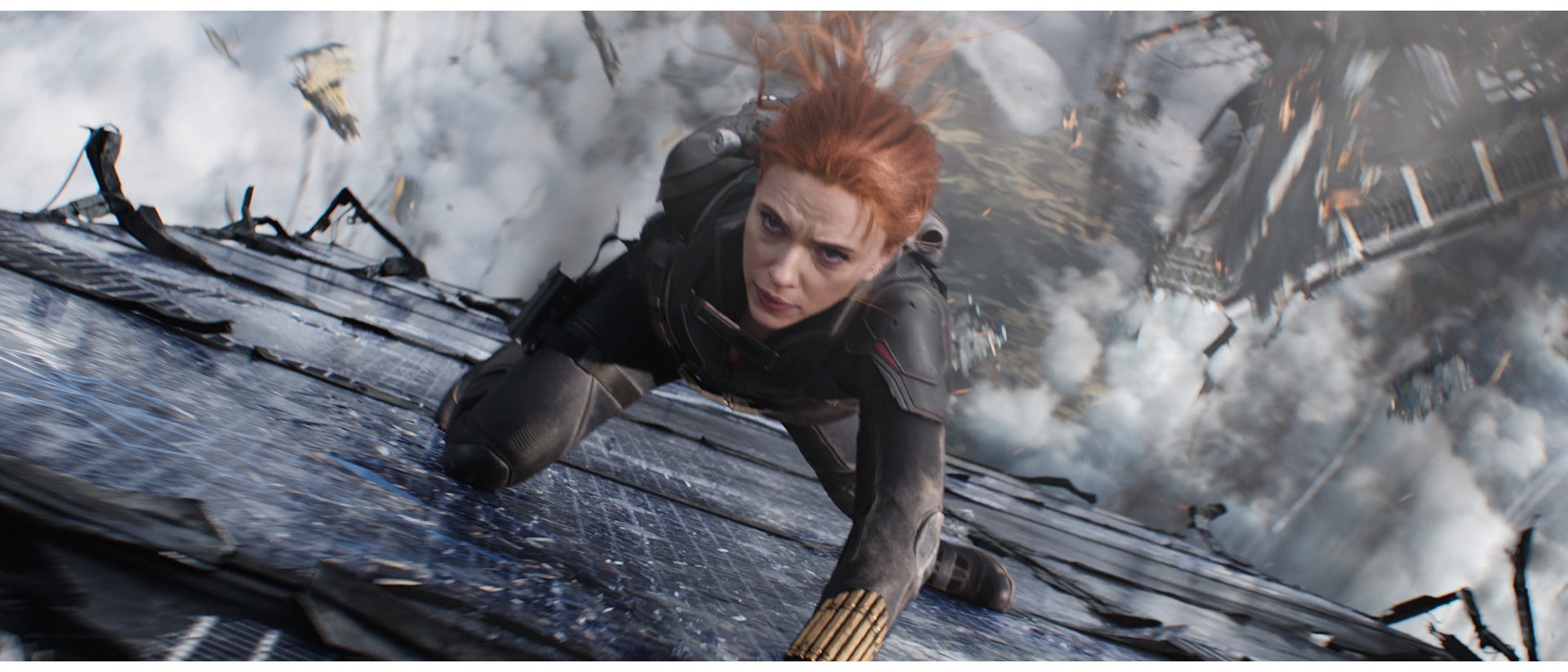
07-09-2021 - Case Study, Gear, Technology
Marvel Studios’ Black Widow DP Gabriel Beristain, ASC Talks Shot Craft with DP Steven Bernstein, ASC – Part 1 of 2
By:
Steven Bernstein:
My name is Steven Bernstein. I'm a director, writer, and cinematographer and I'm here with a dear friend of mine, Gabriel Beristain, ASC, BSC, AMC.
Gabriel is a polymath, a thinker, a cinematographer, but also very much a director and a leader of people. He is articulate and well-read, with an understanding of many things from politics to philosophy. He also speaks several languages; filmmaking is about the encoding of ideas in the unique languages available to us in cinema, and that isn’t limited to formalized spoken language. I often wonder if those who speak many languages have a better innate understanding of film, in that they recognize that different languages can tell the same story with different agreed codas. So it is with film language with the use of the camera and composition, which speaks to the audience. So it is with lighting. So it is with the rhythms of editing. So it is with so many filmmaking practices. Gabriel, welcome.
Gabriel Beristain:
Thank you so much, Steven. It's a pleasure to talk to you, as always, my eloquent, wonderful, friend.
Steven Bernstein:
I'm excited because you just shot Black Widow. You have shot many major films, but I am interested in your unique take on this one. I'd like to start by talking about your special sensibility; not only are you a director, a cinematographer and a producer, but you've worked on both important independent films, going all the way back to the seminal Caravaggio, and some very big action films like S.W.A.T. What a remarkable swath of experience. Could you first talk about the different approaches, if there are any, to all those different films and your different roles? And then, specifically, we'll start talking about how you shoot action.

Beristain on set with Director Cate Shortland - ©Marvel Studios 2021
Gabriel Beristain:
I came from Mexico. I'm very much Mexican. I am an honorary member of the Mexican Society of Cinematographers. They are a wonderful organization and they produce incredibly talented cinematographers. So my foundations and background in Mexico, with its long rich tradition of art, informs much of what I do. But much of my career, in fact most of it, has been outside of Mexico.
When I left Mexico many years ago, and when you and I met in England, you remember that we believed in filmmaking as an integral discipline. We were not very convinced that the separation or the specializations was the way to go. We used to be people who had in one pocket, Cahiers du Cinéma; and the other pocket the American Cinematographer Magazine. Schizophrenics, artists, technicians, intellectuals, activists, studio workers, all at once. We were as equally interested in how Laszlo Kovacs used Brutes to light exteriors on films back in the '60s as we were about the ideas central to semiology, and the philosopher Roland Barthes and the obscure French films of Robert Bresson.
The important thing is that we were integral. Roger Deakins was at the National Film School in England with me and Roger was becoming what Roger became; a wonderful cinematographer, and I was carrying cameras and training myself to try to shoot street demonstrations.
At that time I believed I was going to end up being a war correspondent and I thought my life was going to be taking a camera into social conflicts all over the world. I never thought that I was going to do what I ended up doing. But, I was in England near London, so naturally I also went to art galleries, and I studied paintings, and I studied light, and composition.
I ended up with a mixture of skill sets. I can handhold and find a narrative from observed events, or I can paint with light and shadow to create an imagined world; at the end of the day, it's basically the same: you tell a story.
People ask, What is the difference between shooting a TV show in eight days and a big feature shot over months like Black Widow? There’s no difference. Obviously, you have more resources on the big feature but still each day, it’s about choices, decisions, fighting the clock, achieving creative aims, facilitating fellow artists and realizing a vision; your own and the one you share with your collaborators.
Years ago I remember that some film students said to me, "Gaby, have a look. We shot this scene with one Red Head" (a 650 Watt tungsten film light that was popular in the day). “Why?” I asked. “Because it’s all the lights we had,“ they said. I said, “So the day that you have a bus full of lights, and you have every single light in your possession, and you can choose any light, but you decide to shoot with one light, then you're a professional," and at the end of the day, that's exactly what I feel. The film is more important than the equipment, or the set-up, or the effects, or anything else.
We have a bus full of lights, a bus full of cameras on the TV show I am on now and we had them on Black Widow too. We had every light I could want, we had several Sony VENICE bodies and we had lots of lenses [Panavision C-, E-Series and Panaspeed lenses]. All great gear and they made my work better, but pieces of equipment are our tools and always less important than our ideas.
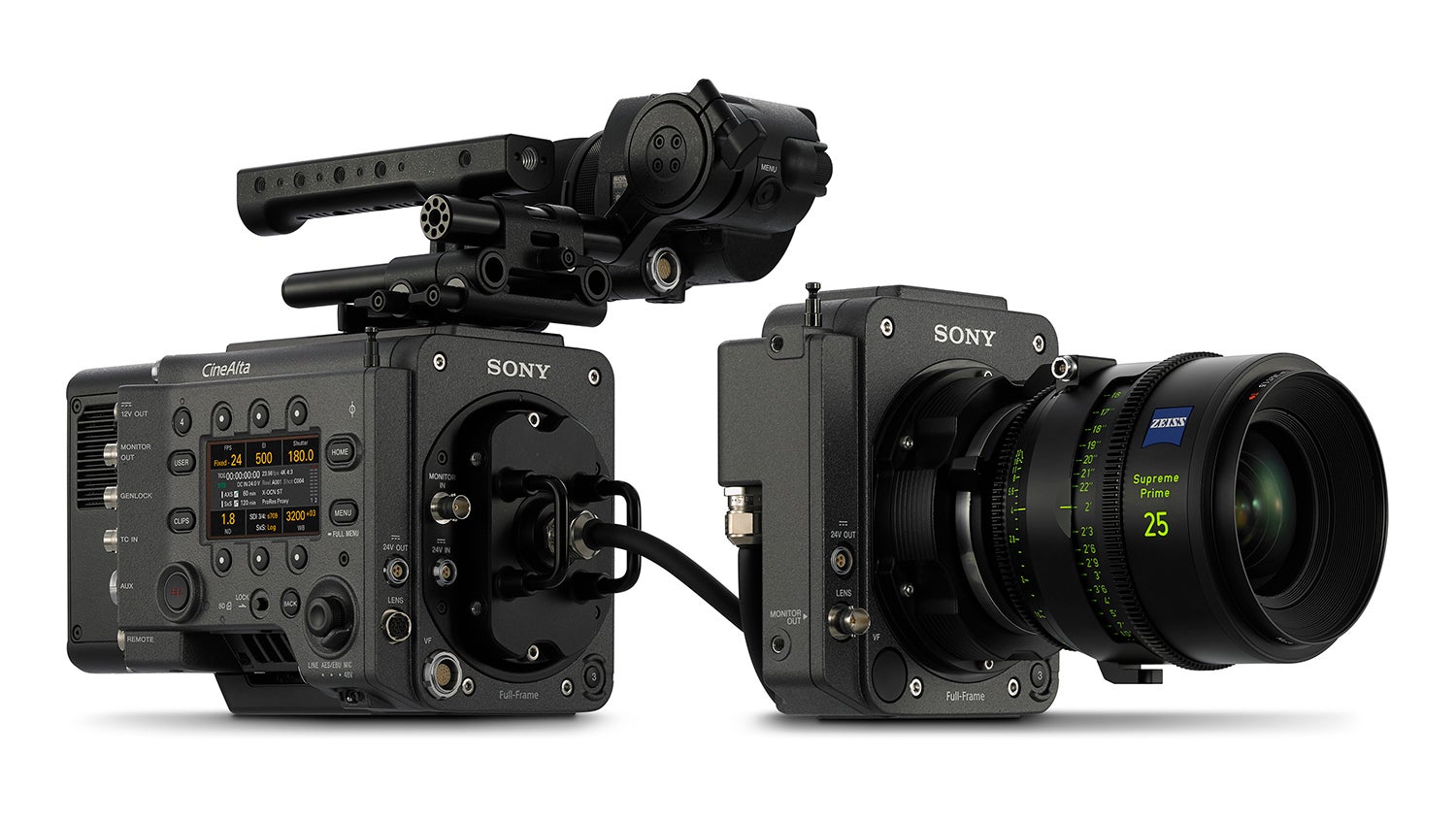
VENICE Rialto Extension System
Steven Bernstein:
I think you're alluding to that pressure, maybe a self-created one, that when you have trucks full of lights, that you might want to demonstrate your power, importance and expertise by having a lot of gear on display. Hundreds of lights, giant rigs and all the rest. Also, I think, early in your career, you just want to play with lots of gear. It’s fun and there is sort of a validation of your value. The whole film seems to be dominated by lights, cranes and overhead rigs. But at some point, there's a stage in your evolution as an artist, when you say, "It's not about the fetishism of how many cables and lights we have. It's about what works most effectively to emotively engage the audience and to tell our story."
Gabriel Beristain:
Absolutely. Of course there is money involved as well. Companies want you to use their cameras, because then other people will want to use those cameras. But really we can’t be influenced by financial forces. We have to create great images, so we are interested in the best cameras. That’s what Arri got right about the Alexa, and what Sony has now gotten right with the VENICE, the camera I am using on my series and the camera with which I shot Black Widow.
Sony, with their VENICE camera has made great strides in achieving that “filmic” look everyone has strived for, and in a camera that is ergonomic, flexible and easy to use.
You have to keep up. Just 11 years ago, Steven, I was shooting the pilot for Hawaii Five-O, and the producer asked me if I had shot digital before. I hadn’t. Neither had he. So we tested every camera on the market. Big oversized cameras. Cameras that produced terrible images, others that were inconsistent. It is remarkable how far we have come.
And Sony was there throughout, putting out different cameras, none of which I loved. But they persevered and then suddenly, here they are, announcing, "We have a compact, portable, versatile, camera that you can use to generate 4K, 6K, that you can use all your lenses on, you can even go anamorphic, that you can use all your frame rates, that you can use all your formats. Incredibly you can even separate the front end of the camera and make it very compact with their VENICE Extension System."
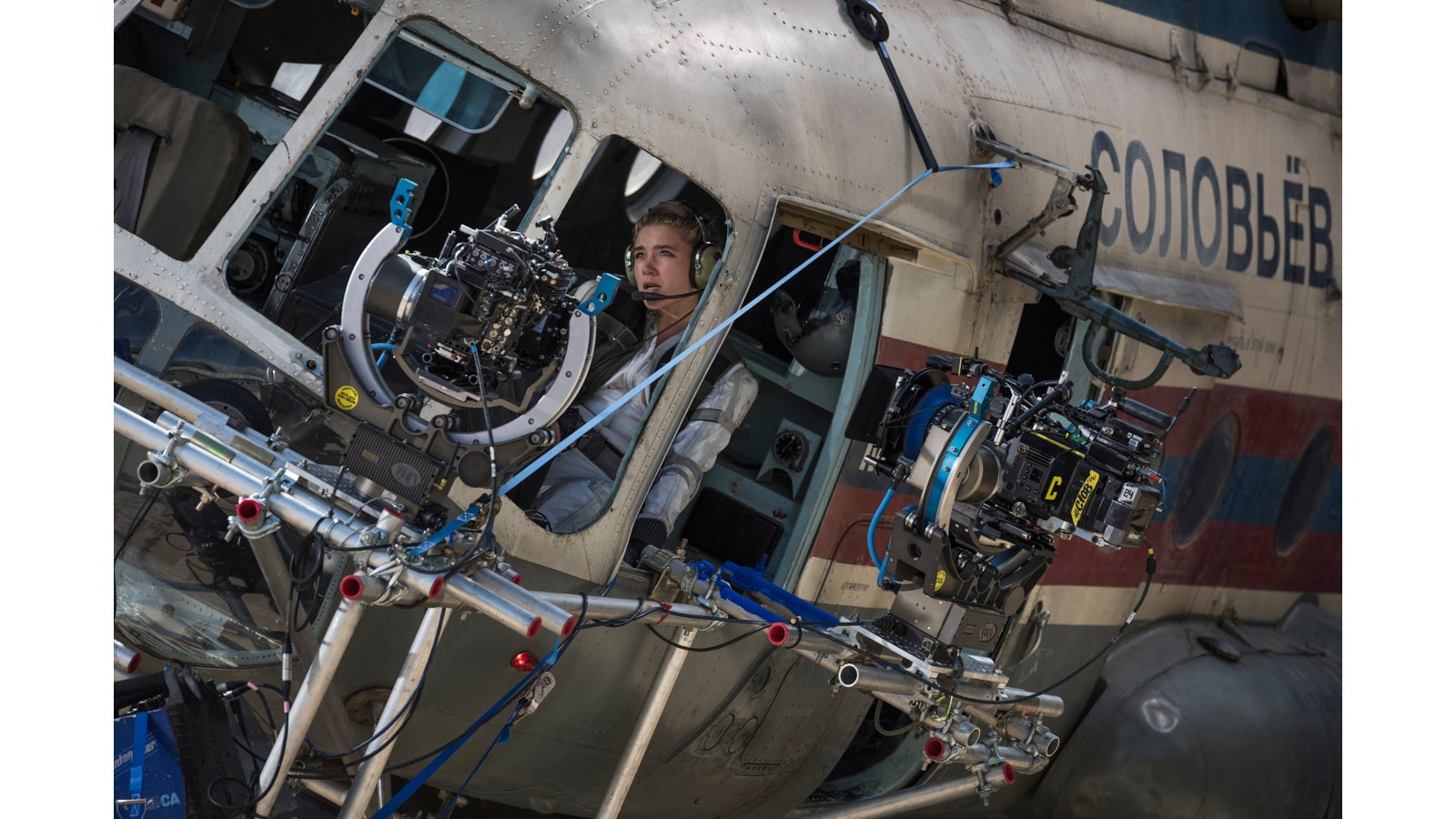
©Marvel Studios 2021
Steven Bernstein:
I love to use a lot of cameras when shooting action. Actually, I love to use a lot of cameras when shooting anything. I know you do too.
Gabriel Beristain:
Yes. I'm totally convinced that is the right approach too. My multi-camera style has evolved, in part because I was looking at the work of one of my favorite directors, Akira Kurosawa, who shot basically with one camera, maybe two for all those masterpieces. In Seven Samurai, in one of the scenes he has a close up of the old father who is dying, and he puts the camera behind the old man. Wild. No frontal shot. No eyes. A key moment in the film and it’s from BEHIND. What an extraordinary but risky choice. In our schedules on films now we don’t always have time, or the courage to make those radical choices. But with multiple cameras we can take risks and still have other choices in the cutting room just in case. Kurosawa’s choice was the right one. But he had to take a risk. We can take those risks more freely with multiple cameras.
Steven Bernstein:
So when you shoot multiple cameras, you actually improve the quality of the film. Sometimes directors are more concerned with shot/reverse and master shots. Just get in and out, and do the dialogue, “cover” the script and done. But by using multiple cameras you are getting more and better shots.
Gabriel Beristain:
I think so. But of course, as you know, we also use all those cameras to get the essential elements as well and sometimes quicker than we would get them with one camera. Quicker means one has time to get additional shots or the director has more time to focus on performances. Now that I'm a director that extra time is to my benefit. I was directing MacGyver and I was using multiple cameras all the time.
So now I'm shooting a series for Fox/Disney called Just Beyond, which is, more or less, a remake of that fantastic series called Goosebumps. Horror for teenagers. It's anthological, so each episode has got its own little style, and therefore its own lighting design. Add to that the fact that TV has a tight schedule, so using two or three cameras has become a great way to tell the story while shooting at TV pace.
By the way, a different pace than Black Widow, but I'm using the same camera, the Sony VENICE. I started with the VENICE on Black Widow with version four of the firmware. So during the first week or second week of Black Widow, I got version five of the firmware. And now, I'm shooting with version six of the firmware on Just Beyond, so I have been with it as it has evolved.
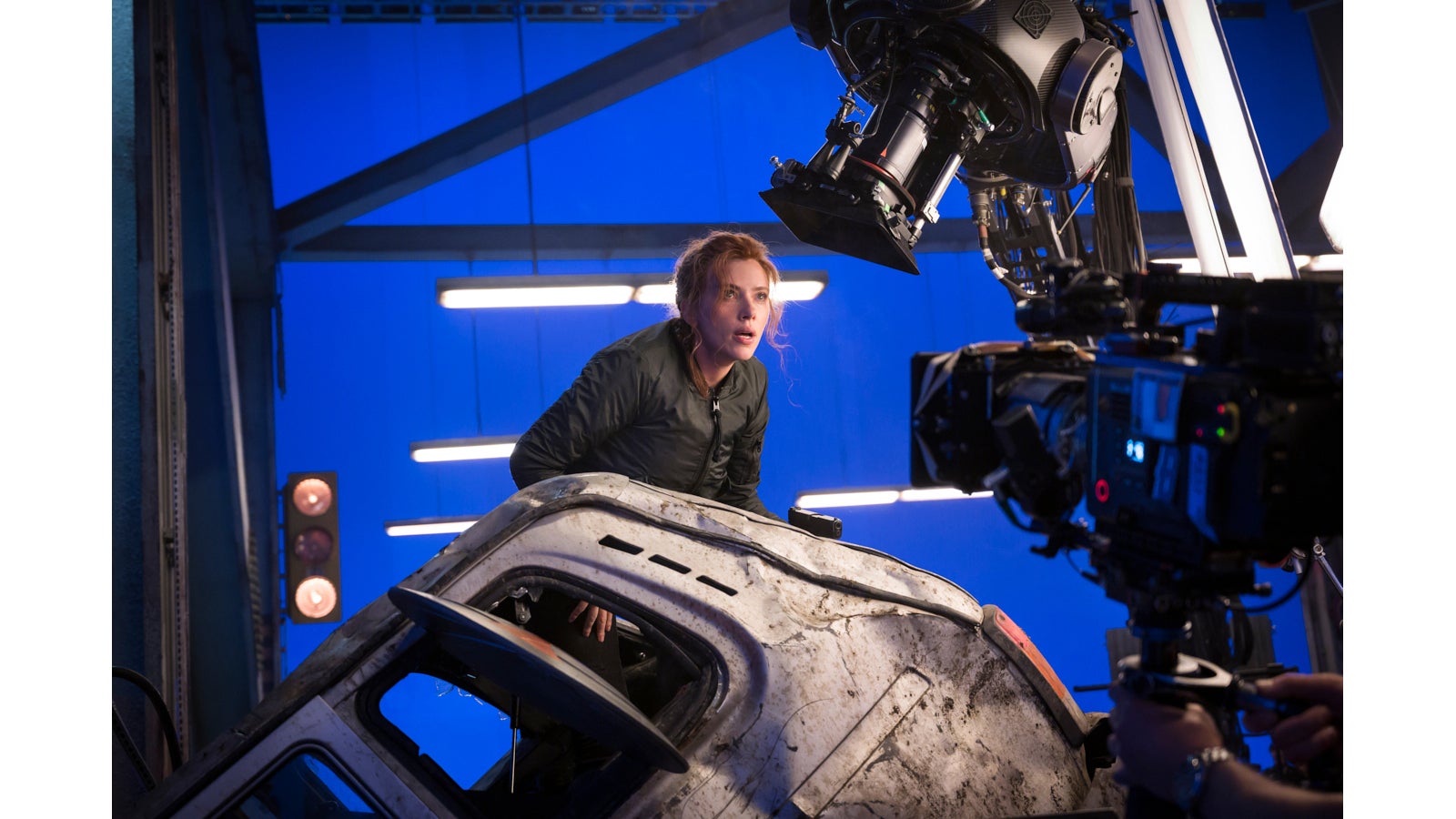
©Marvel Studios 2021
Steven Bernstein:
It's your preferred camera now then really for these reasons you cited?
Gabriel Beristain:
I still own Alexa Minis, which I have in my company in Cuba. But the fact that they don't do 4K, and the demand in the marketplace for 4K is huge, so this very much gives the VENICE the edge.
Steven Bernstein:
I want to stay with you a little bit longer on the multiple camera thing. We talked about the benefits of using multiple cameras for the creative choices it provides and for the speed but for me I also think using multiple cameras is hugely valuable when shooting action. Do you agree?
Gabriel Beristain:
Yes. Absolutely. Action scenes are a kind of choreography. It starts with the stunt coordinator filming their planned action on low-res cameras, just to test and possibly then suggest specific shots that will best work for the action. I appreciate it, and there are phenomenal stunt coordinators, not only good at what they do, but they are great filmmakers. But, as good as their suggestions might be, there is another factor the director and the cinematographer have to think about; the actors, and related to that the dramatic construction of the scene. These are things that drive blocking and that determine where the emphasis needs to be and how the action, when it comes, will be integrated. It also determines where you place your cameras.
It’s the audience's empathic connection with character that makes film work, so where you place your cameras ultimately has to be about what best serves that connection; is the character in danger? Is the danger increasing? What are the chances of rescue or failure? And so on. So the stunt coordinator makes an important contribution, but finally the design of a sequence has to come down to the DP and the director.
Still, having three or more cameras at your disposal, you can take some risks and tie the action to the actors. You can get a few frames of a facial reaction with action happening nearby, you can pick up small elements that tie performance to action which helps it be more real. Sometimes you do stunts with your main cast, who may be heavily padded to protect them, but you still might be able to “sell” the action for a few seconds from a certain angle, but you can’t be sure until you see it. All good reasons to have multiple cameras.
Steven Bernstein:
So you use multiple cameras both for the stunts, which might be one pass with body doubles and stunt people dressed to match actors, and then another pass, again with multiple cameras, to tie the real actors to the action.
Gabriel Beristain:
Exactly, you respect the stunt coordinator, but you connect their work with the performances.

Director Cate Shortland, in glasses - ©Marvel Studios 2021
Steven Bernstein:
You are both an experienced cinematographer and a director. I think that helps with both jobs. Having directed, one understands for example the pressures and responsibility on the director. Was this the case when you were working with a director as a DP on Black Widow?
Gabriel Beristain:
My director on Black Widow was Cate Shortland. Of course I acted in my capacity as a cinematographer but as this was the biggest film she worked on I was also, as I often said to her, the hand of the queen protecting her from all the lords of the kingdom; we had the stunt coordinator, who was very powerful, the visual effects coordinator, who was very powerful, the art director, the production designer, who was very powerful. Everyone was very powerful and had agendas. Good agendas, as they all wanted the best and most successful film, but that didn’t mean it always would jibe with Cate’s vision. So I tried to help facilitate her vision while acting as an intermediary to, if I can extend the metaphor, the lords of the kingdom.
Steven Bernstein:
That's brilliantly put because very often that's exactly what the cinematographer is; the bridge between the crew, the department heads, and as you say, it's like the lord protector of the queen or king. I think it's a super important function for a cinematographer. But going back to the multiple cameras. Are there any down sides?

©Marvel Studios 2021
Gabriel Beristain:
Well, when I was shooting Scarlett Johansson, our principal artist and a great actress, she had some big moments and the inclination was to use one camera to make sure everyone is focused on that performance. Also, even though I have evolved a very specific lighting style which lends itself well to multi-cameras, I would naturally alter that when it came time for Scarlett’s key moments, if necessary. By necessary I mean, what would make her look her best? Of course, sometimes I could do that with multi-cameras but she, like many major actors, has clearly defined ideas about how they can best be lit and the camera angles that are best for her.
At first I sensed the multi-cameras made her a little nervous, naturally. But once she saw the results she was very generous and we worked well together. Which isn’t to say we didn’t sometimes use a giant book-light (bounce light passed through a heavy diffusion) to create beautiful close-ups. I think what Scarlett respected was that I had a particular style and way of working and she wanted to facilitate me as I facilitated her. In any case I have a style of lighting that isn’t precise. It works, but it also allows the actors and the stunt team and the director a lot of flexibility.
You asked about problems, one that remains is eyeline. Without getting too technical, when you shoot a close-up off the central axis of the eyes, with certain lenses the eye-line can look too wide; as if the actor isn’t even looking at the other actor. It’s at those moments that you have to think seriously about using only one camera.
Steven Bernstein:
Do you get resistance from directors?
Gabriel Beristain:
I do. Absolutely. They sometimes have to learn to spread their attention between several monitors. Some never want to do it except on action sequences, but others, and I think I am truthful in saying most, fall in love with the technique.
Steven Bernstein:
And all those cameras on Black Widow…. were they all VENICEs?
Gabriel Beristain:
Yes. All VENICEs. Because as I said, the VENICE has the VENICE Extension System mode which basically means you get the same camera, the same quality, just smaller. Hugely useful.
End Part 1. Part 2 coming very soon.
About the author:
Director / DP Steven Bernstein, DGA, ASC, WGA is an ASC outstanding achievement nominee for the TV series Magic City. He shot the Oscar winning film “Monster,” “Kicking and Screaming,” directed by Noah Baumbach, “White Chicks” and some 50 other features and television shows. The second film he wrote and directed, “Last Call,” stars John Malkovich, Rhys Ifans, Rodrigo Santoro, Zosia Mamet, Tony Hale, Romola Garai and Phil Ettinger, released late in 2020 in to theaters in selected cities. "Last Call" is now streaming on Amazon Prime.
Steven can be followed at Stevenbernsteindirectorwriter on instagram where he regularly posts short insights and illustrations about filmmaking.

